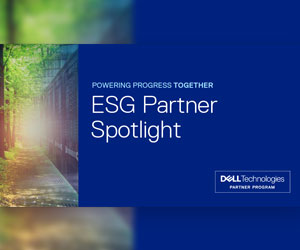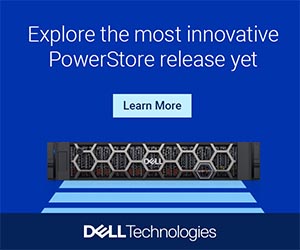The data center is the heart of your customers’ enterprise, providing, storage, networking, and computing resources to support varied and demanding applications that drive their business forward.
Managing the heat that is generated by servers, routers, switches, and other equipment within the data center is of paramount importance. Typically, the area’s temperature and humidity are managed using powerful cooling technology that is specially designed to be able to remove heat from an area as efficiently as possible.
Indeed, effectively managing the heat generated by your customers’ data centers and servers can lead to a host of benefits, including increased reliability, reduced downtime, and improved capacity. But finding the right solution for each customer’s specific data center needs can be a challenge in and of itself.
Fortunately, Dell Technologies offers several PowerEdge server cooling options. The following are three of the more popular choices.
Air Cooling
Here, Dell combines sophisticated software control algorithms with cutting-edge air-moving solutions to efficiently cool the full range of PowerEdge server configurations:
• Breakthrough CFD airflow simulations lead to optimized system designs
• MVC provides right amount of cooling directed to precise target areas inside PowerEdge servers
• Latest fan and heat-sink innovations expand number of components that can be air-cooled over previous generations
Top 3 benefits for your customers:
1. Extend the useful life of their air-cooled data center
2. Maximize the range of air-cooled configurations throughout enterprise
3. Intelligent cooling controls ensure high efficiency and low power utilization effectiveness (PUE)
Direct Liquid Cooling
Dell provides Direct Liquid Cooling as an option for cooling high-power components in dense configurations. In this instance, factory-installed cold-plate loops connect to create a complete liquid cooling solution that can more efficiently manage IT heat than air cooling alone:
• DLC uses liquid to remove heat created by high-power processors
• Typically available on dense compute systems; also available with mainstream 1U and 2U PowerEdge servers
• Leak Sense technology alerts customers to minimize potential issues quickly and automatically
Top 3 benefits for your customers:
1. Increased System Cooling Capacity for configurations such as high TDP CPUs, dense storage, and/or add-in cards.
2. Improved Energy Efficiency (PUE) will, in turn, reduce energy costs compared to cooled air, extending the life of existing air infrastructure
3. Higher Compute Density supports more cores per rack and enables double the core count over air-cooling
Immersion Cooling
By and large, Immersion Cooling is used for niche applications; that is, instances where conditioned air is scarce or otherwise not available. This approach completely submerges the system in a vat of liquid. Dell provides cooling solutions in this category to support single-phase and two-phase immersion projects.
Top 3 benefits for your customers:
1. 100% heat capture to liquid (no air required)
2. Manages high TDP components in dense PowerEdge server systems
3. Non-conductive fluid
Consider Dell’s OpenManage Power Manager for greater insight into your customers’ PowerEdge server cooling solutions
Dell provides a program called “OpenManage Power Manager” which does exactly what its name describes: it allows the solution provider to monitor and adjust various system sub-components to ensure each client enjoys optimum, sustained performance in real time, regardless the size of their operation.
Highlights of this management program include:
· Reduced carbon footprint of a data center
· Intelligent insight into what is consuming the most power
· Quicker remediation by identifying and fixing an issue before it creates a negative impact
· Reduced power usage by automating policies that place power caps on racks/rows/rooms of PowerEdge servers
Additionally worth noting, all of Dell’s PowerEdge servers are designed with Smart Cooling technology baked into it, to not only sustain optimal performance but also to help reduce the carbon footprint of your customer’s data center.
Learn more
Learn about the best cooling options for your customers’ needs by visit Dell’s smart cooling technology web page.













